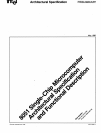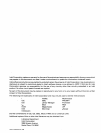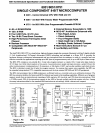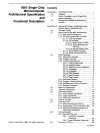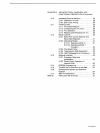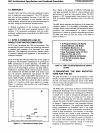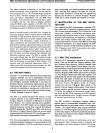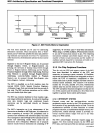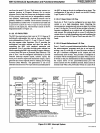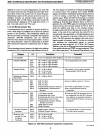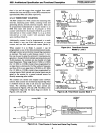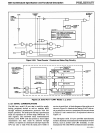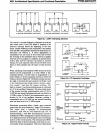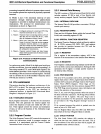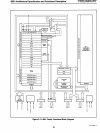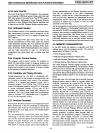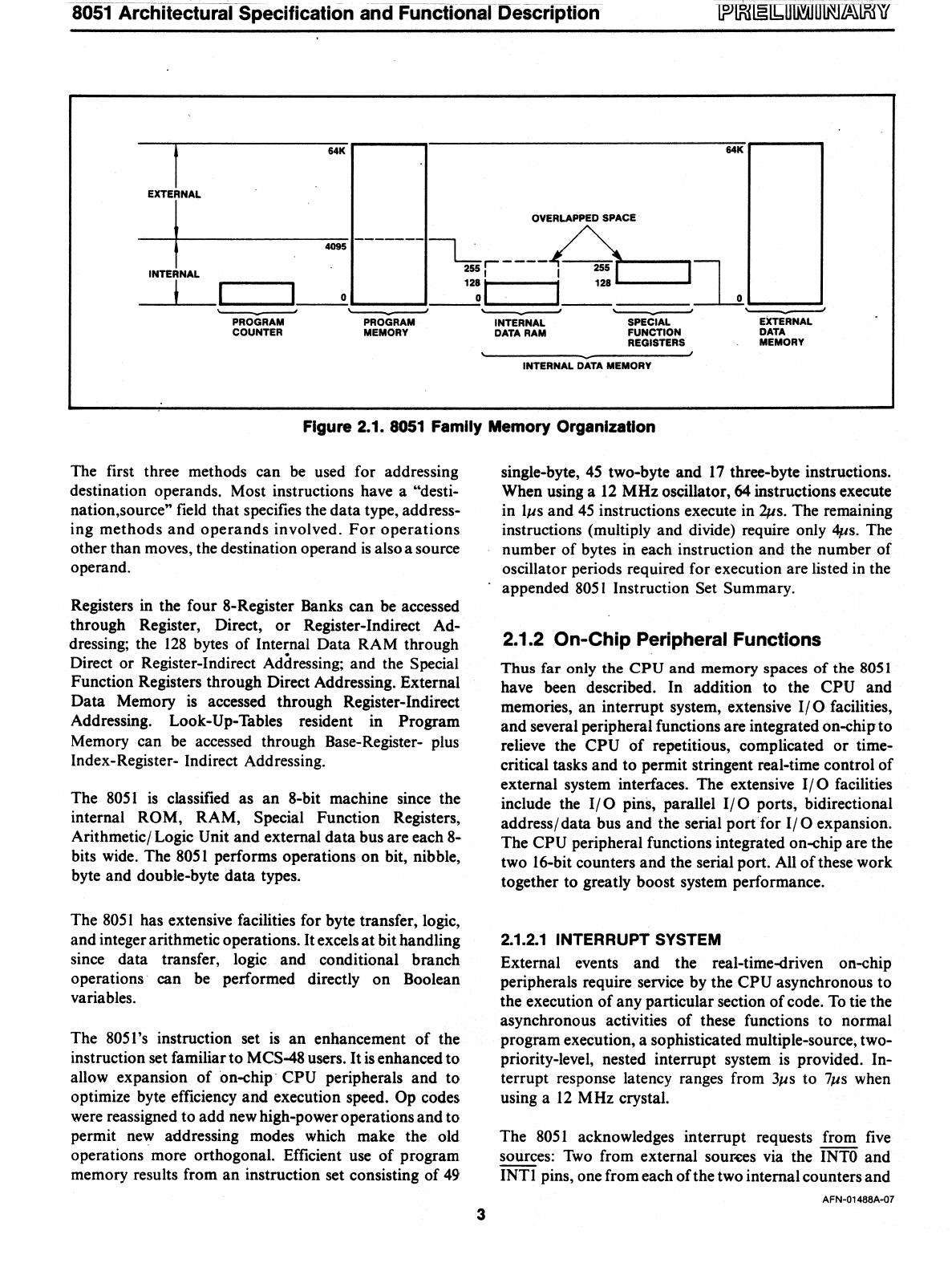
8051
Architectural Speciffcation ancrFunctionaJ Descrlpfion
t
64K
64K
EXTERNAl-
OYERl-APPED SPACE
I
------
-"Lr-----A
4095
'l
INTERNAl-
255 I I
25S
,
I I
1~1..
I
128
,
-
PROGRAM
COUNTER
0
,
,
PROGRAM
MEMORY
J
,
INTERNAl-
DATA RAM
,
-
,
SPECIAL
FUNCTION
REGISTERS
INTERNAL
DATA MEMORY
,
,
EXTERNAL
DATA
MEMORY
,
Figure 2.1.
8051
Family Memory Organization
The first three methods can
be
used for addressing
destination operands. Most instructions have a
"desti-
nation,source" field that specifies the data type, address-
ing methods
and
operands
involved.
For
operations
other than moves, the destination operand
is
also a source
operand.
Registers
in the four 8-Register Banks can
be
accessed
through Register, Direct,
or
Register-Indirect Ad-
dressing; the
128
bytes of Internal Data RAM through
Direct or Register-Indirect Addressing; and the
Special
Function Registers through Direct Addressing. External
Data Memory
is
accessed through Register-Indirect
Addressing. Look-Up-Tables resident in Program
Memory can
be
accessed through Base-Register- plus
Index-Register- Indirect Addressing.
The
80S
1
is
classified as an 8-bit machine since the
internal
ROM, RAM, Special Function Registers,
Arithmeticl
Logic Unit and external data bus are each
8-
bits wide. The
80S
1 performs operations on bit, nibble,
byte and double-byte data types.
The
80S1
has extensive facilities for byte transfer, logic,
and integer arithmetic operations. It excels
at
bit handling
since data transfer, logic and conditional branch
operations· can be performed directly on Boolean
variables.
The
80S
I's instruction set
is
an
enhancement
of
the
instruction set familiar to
MCS-48 users.
It
is
enhanced to
allow expansion of
on-chip· CPU peripherals and to
optimize byte efficiency and execution speed.
Op codes
were reassigned to add new high-power operations and to
permit
new
addressing modes which make the old
operations more orthogonal. Efficient use
of
program
memory results from an instruction set consisting of
49
3
single-byte,
4S
two-byte and
17
three-byte instructions.
When using a
12
MHz oscillator, 64 instructions execute
in
IlJs
and
4S
instructions execute in
4ls.
The remaining
instructions (multiply and divide) require only
~s.
The
number of bytes
in
each instruction and the number
of
oscillator periods required for execution are listed in the
appended
80S
I Instruction Set Summary.
2.1.2 On-Chip Peripheral Functions
Thus
far
only
the
CPU
and
memory
spaces
of
the
80S 1
have been described. In addition to the CPU and
memories, an interrupt system, extensive
I/O
facilities,
and several peripheral functions are integrated on-chipto
relieve the CPU
of
repetitious, complicated
or
time-
critical tasks and to permit stringent real-time control
of
external system interfaces. The extensive 110 facilities
include the
110 pins, parallel 110 ports, bidirectional
address/data bus and the serial port for
I/O
expansion.
The CPU peripheral functions integrated on-chip are the
two 16-bit counters and the serial port. All
of
these work
together to greatly boost system performance.
2.1.2.1
INTERRUPT SYSTEM
External events and the
real~time-driven
on-chip
peripherals require service by the CPU asynchronous to
the execution
of
any particular section
of
code.
To
tie the
asynchronous activities of these functions to normal
program execution, a sophisticated multiple-source,
two~
priority-level, nested interrupt system
is
provided. In-
terrupt response latency ranges from
3IJs
to
7IJs
when
using a
12
MHz crystal.
The
80S
I acknowledges interrupt requests from
five
sources:
Two
from external sour.res
via
the
INTO
and
INTI pins, one from each
of
the two internal counters and
AFN-Ol488A-D7



